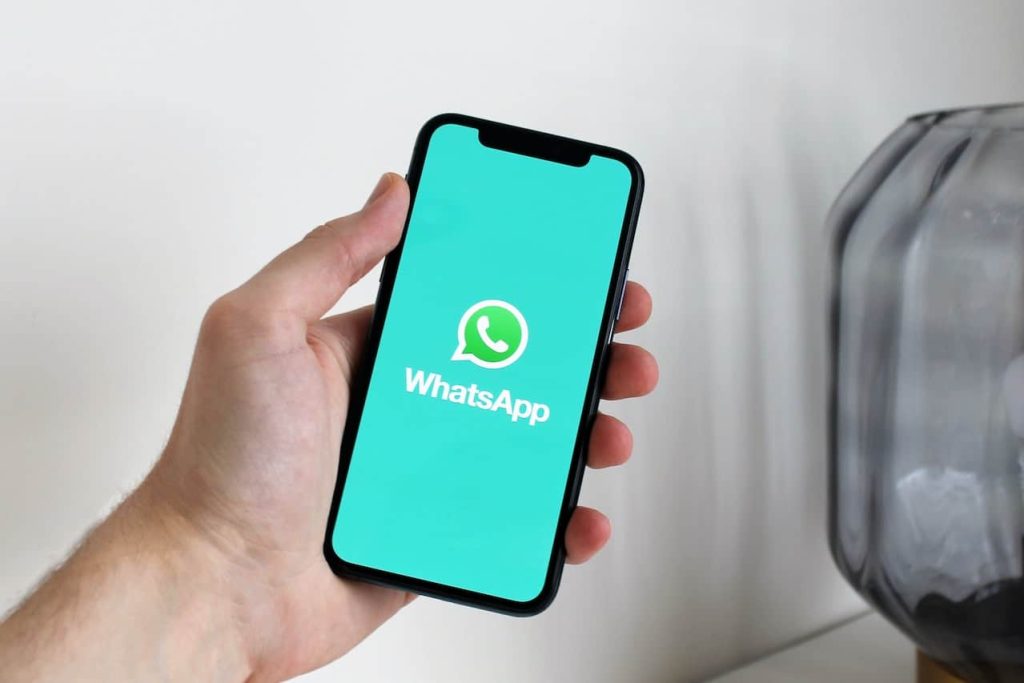How to Use WhatsApp Broadcast to Sell More

With over 2 billion active users, WhatsApp is one of the most popular messaging apps worldwide. Its broad reach and simplicity make it an ideal platform for businesses to connect with customers and promote their products or services. One of the best features for businesses is the WhatsApp broadcast, which allows you to send messages to multiple contacts simultaneously. In this article, we will explore how to use WhatsApp broadcast to sell more, increase customer engagement, and grow your business.
Build Your Broadcast List

Building your broadcast list is an essential step in leveraging the power of WhatsApp broadcast to reach out to your target audience and promote your products or services. Your broadcast list is essentially a group of contacts that have agreed to receive messages from you on WhatsApp. The more targeted and engaged your broadcast list is, the higher the chances of your messages resonating with your audience and driving sales or engagement.
To build your broadcast list effectively, there are a few key steps you need to take:
- Identify your target audience: Before you start adding contacts to your broadcast list, you need to know who you want to reach out to. This involves understanding your target market, their needs, interests, and preferences. You can use market research, customer surveys, or social media analytics to get insights into your target audience.
- Segment your audience: Once you know who your target audience is, you can segment them into different groups based on their interests or preferences. This allows you to send more relevant and personalized messages to each group, increasing the chances of engagement and conversion.
- Collect phone numbers: To add contacts to your broadcast list, you need their phone numbers. You can collect phone numbers in several ways, such as:
- Offering a sign-up form on your website or social media pages
- Collecting phone numbers during in-person events or promotions
- Asking customers to opt-in to your broadcast list through a text message or email
Make sure to comply with privacy and data protection regulations when collecting and using personal information.
- Add contacts to your broadcast list: Once you have collected phone numbers, you can add them to your broadcast list using WhatsApp. To do this, go to your WhatsApp app, click on the three dots on the top right corner, select “New Broadcast,” and add the contacts you want to include in your list. You can add up to 256 contacts to a single broadcast list.
- Keep your list updated: It’s essential to keep your broadcast list updated by removing inactive or uninterested contacts and adding new ones regularly. This ensures that your messages reach the right people and avoid being flagged as spam.
Building your broadcast list requires effort, but it’s a crucial step in using WhatsApp broadcast to sell more and grow your business. By identifying your target audience, segmenting your audience, collecting phone numbers, adding contacts to your list, and keeping it updated, you can create a high-quality and engaged broadcast list that delivers results. Remember to comply with privacy regulations and avoid sending spammy or irrelevant messages to your list to maintain your audience’s trust and engagement.
Craft Compelling Messages

Crafting compelling messages is crucial to the success of your WhatsApp broadcast campaign. Your messages need to capture the attention of your audience, communicate your value proposition, and motivate them to take action, whether it’s making a purchase, visiting your website, or engaging with your content.
Here are some tips on how to craft compelling messages for your WhatsApp broadcast:
- Be clear and concise: Your messages should be easy to understand and get straight to the point. Avoid using jargon or complicated language that could confuse or bore your audience.
- Use engaging language: Use language that is interesting, exciting, and relevant to your audience. This can include asking questions, using humor or storytelling, or highlighting benefits and solutions.
- Personalize your messages: Personalizing your messages by using your audience’s name, location, or interests can make them feel more connected to your brand and increase engagement.
- Use visuals: Incorporating images or videos into your messages can help grab attention and make your messages more memorable. However, make sure to use visuals that are relevant to your message and of high quality.
- Include a call-to-action: A call-to-action (CTA) is a clear and specific instruction that tells your audience what you want them to do next. This can be to visit your website, make a purchase, or reply to your message.
- Test and optimize: Testing and optimizing your messages is essential to improving their effectiveness over time. You can use A/B testing to compare different messages and see which ones drive the highest engagement or conversion rates.
When crafting compelling messages, it’s important to keep in mind the context of your audience’s experience. For example, if you are sending messages to people who have just signed up for your newsletter, you might want to welcome them and thank them for joining before delivering your message.
Finally, it’s crucial to avoid sending spammy or irrelevant messages that can damage your brand’s reputation and lead to low engagement rates. Make sure to segment your audience and tailor your messages to their interests and preferences. This ensures that your messages are targeted and valuable to your audience and drive the results you want.
In summary, crafting compelling messages is a crucial step in leveraging the power of WhatsApp broadcasts to sell more. By being clear and concise, using engaging language, personalizing your messages, using visuals, including a call-to-action, testing and optimizing your messages, and avoiding spammy or irrelevant content, you can create high-quality and effective messages that resonate with your audience and drive engagement and conversion.
Schedule Your Broadcasts

Scheduling your WhatsApp broadcasts is an essential aspect of using the platform effectively. It enables you to plan your messages in advance, ensure consistency and relevance, and avoid spamming or bombarding your audience with too many messages. In this section, we will explore some tips and best practices for scheduling your broadcasts.
- Plan Your Broadcasts in Advance
The first step in scheduling your WhatsApp broadcasts is to plan your content in advance. Identify the key messages, promotions, or events you want to promote and create a content calendar or schedule. This will help you stay organized and focused on your goals, as well as avoid last-minute rushes or mistakes.
- Use a Calendar or Scheduling Tool
Once you have your content plan, it’s time to schedule your broadcasts. You can use a calendar or scheduling tool to plan your messages and ensure they are sent at the right time. There are many tools available online, such as Hootsuite, Buffer, or HubSpot, which allow you to schedule your WhatsApp broadcasts in advance.
- Consider the Time Zones and Preferences of Your Audience
When scheduling your WhatsApp broadcasts, it’s essential to consider the time zones and preferences of your audience. For example, if you are targeting an international audience, you may need to adjust your schedule to accommodate different time zones. Similarly, if you are targeting a specific demographic, such as working professionals, you may want to avoid sending messages during work hours.
- Avoid Sending Too Many Messages
While scheduling your WhatsApp broadcasts, it’s crucial to avoid sending too many messages or bombarding your audience with irrelevant content. This can lead to fatigue and disengagement, which can ultimately harm your business. Instead, focus on quality over quantity and send messages that are relevant, informative, and engaging.
- Monitor Your Results
Finally, it’s essential to monitor your broadcast metrics and results to evaluate the effectiveness of your schedule. Keep track of your open rates, click-through rates, and conversion rates, and adjust your schedule or content accordingly. You can also use A/B testing or other experiments to compare the effectiveness of different scheduling strategies.
In conclusion, scheduling your WhatsApp broadcasts is a critical aspect of using the platform effectively. It enables you to plan your content in advance, ensure consistency and relevance, and avoid spamming or bombarding your audience with too many messages. By following these tips and best practices, you can create engaging and effective broadcast messages that resonate with your audience and help you achieve your business goals.
Monitor Your Results

Monitoring your results is a crucial step in any marketing or sales strategy, and WhatsApp broadcast is no exception. By tracking and analyzing your broadcast metrics, you can identify areas of improvement, adjust your strategy, and optimize your results. In this section, we will discuss why monitoring your results is essential, what metrics you should track, and how to analyze and interpret your results.
Why Monitor Your Results? Monitoring your results helps you to:
- Evaluate the effectiveness of your strategy: By tracking your metrics, you can determine if your broadcast messages are reaching and engaging your audience. If you notice low open rates or click-through rates, it may be a sign that you need to adjust your messaging style, timing, or visuals.
- Identify areas of improvement: By analyzing your results, you can identify patterns or trends in your audience’s behavior and preferences. For example, if you notice that certain types of messages or visuals perform better than others, you can adjust your strategy accordingly.
- Optimize your results: By testing different variables, you can optimize your broadcast messages to achieve the highest possible conversion rates. For example, by experimenting with different call-to-action (CTA) phrases or placements, you can encourage more clicks and conversions.
What Metrics Should You Track? Here are some of the key metrics you should track when monitoring your WhatsApp broadcast results:
- Open rates: This measures the percentage of recipients who opened your message. A low open rate may indicate that your subject line or preview text is not compelling enough.
- Click-through rates (CTR): This measures the percentage of recipients who clicked on a link or CTA in your message. A low CTR may indicate that your message is not relevant or engaging enough.
- Conversion rates: This measures the percentage of recipients who completed a desired action, such as making a purchase or signing up for a newsletter. A low conversion rate may indicate that your message or landing page needs improvement.
- Engagement rates: This measures the level of interaction and response from your audience, such as replies, forwards, or shares. A high engagement rate indicates that your message resonates with your audience and encourages them to take action.
How to Analyze and Interpret Your Results? Here are some tips on how to analyze and interpret your WhatsApp broadcast results:
- Segment your audience: By segmenting your audience based on demographics, interests, or behavior, you can identify patterns or trends in their response to your messages.
- Test different variables: By conducting A/B testing or other experiments, you can compare the effectiveness of different variables, such as messaging style, visuals, or timing.
- Use data visualization tools: By using graphs, charts, or other data visualization tools, you can easily identify trends and patterns in your data.
- Adjust your strategy: Based on your analysis, adjust your strategy and test again to optimize your results.
In conclusion, monitoring your WhatsApp broadcast results is essential to evaluate the effectiveness of your strategy, identify areas of improvement, and optimize your results. By tracking and analyzing your metrics, you can gain valuable insights into your audience’s behavior and preferences and adjust your strategy accordingly. Remember to segment your audience, test different variables, and use data visualization tools to make informed decisions.